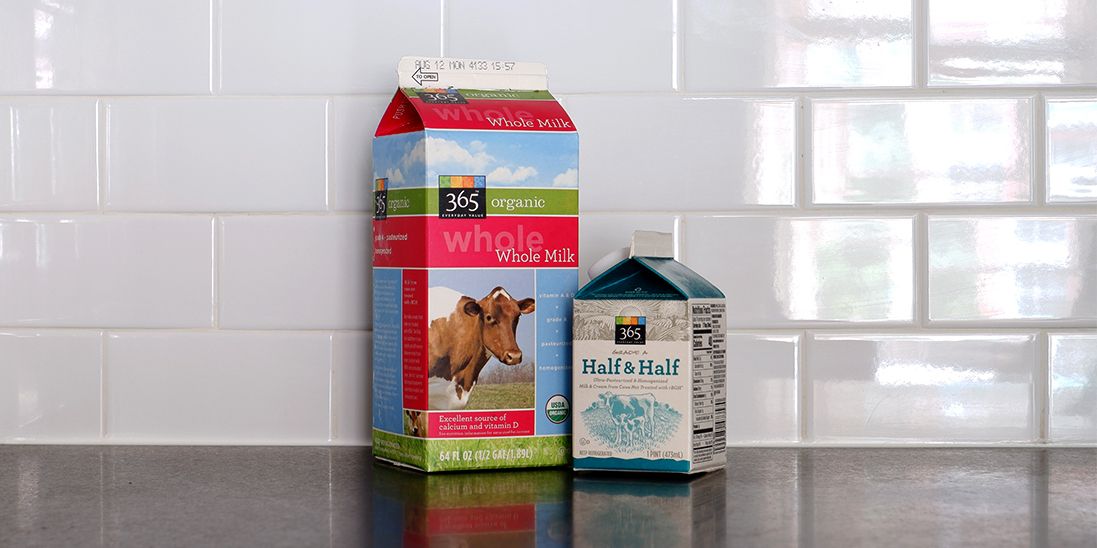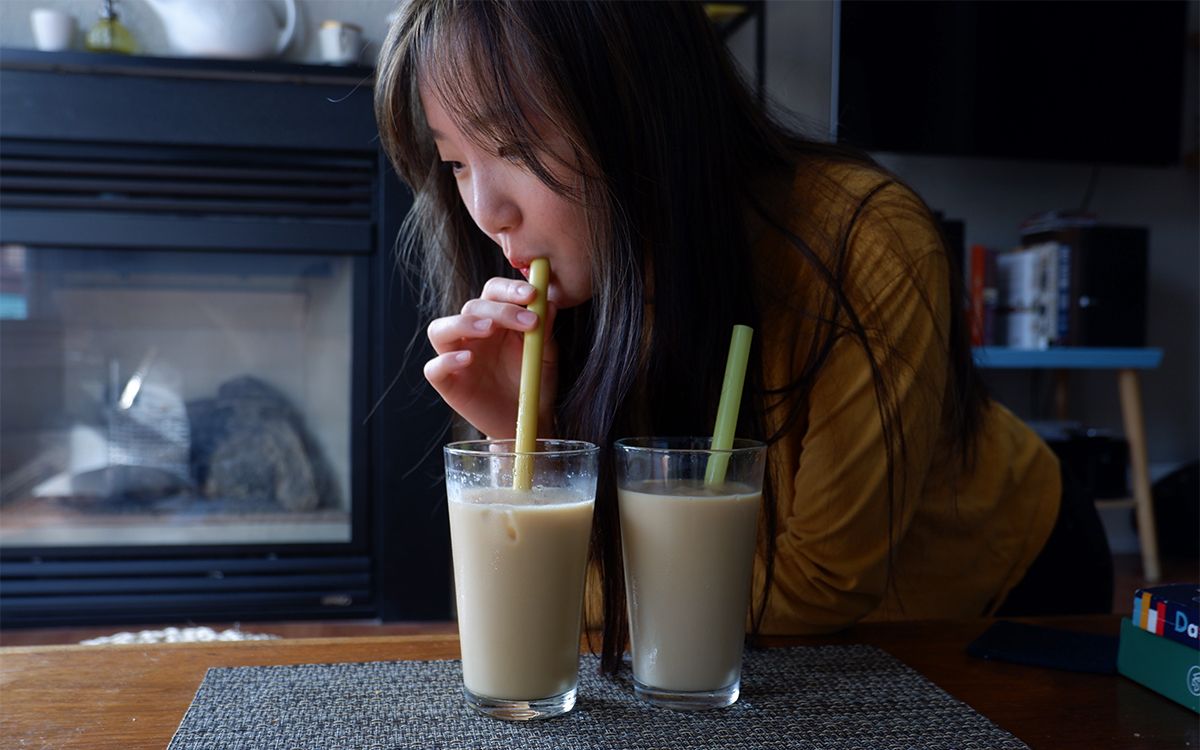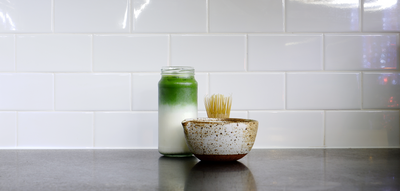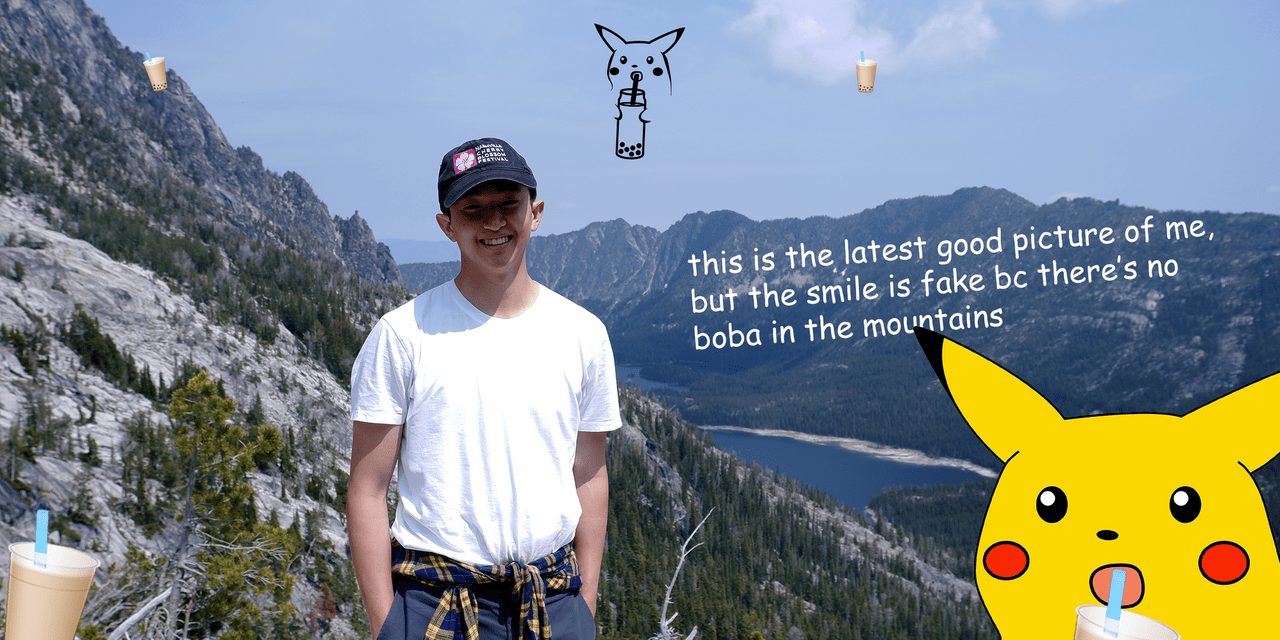Boba guides
Latest notes
For better milk tea, use whole milk instead of half and half
Find out why you should brew your tea stronger and use whole milk.
July 28, 2019Why does the latte from your local coffeeshop taste so different from your neighborhood diner coffee with cream? At their core, both are made with just ground coffee, water, and dairy. However, the latte is more rounded, a little sweeter, and its texture is light and frothy rather than smooth.
Many of these differences in taste are due to how espresso is prepared versus drip coffee, but the role of dairy also plays a big role in the variation between the two. Using a higher proportion of milk as in a latte contributes more sweetness than the smaller amount of cream you add to drip coffee. Additionally, the milk in a latte is steamed, which creates a foamy texture and affects the taste in other ways.
But it's not just coffee – differences in dairy choices should also affect tea. In this post, I'll talk a little bit about the science behind this (🤓🤓🤓), and experiment with using half and half versus whole milk in milk tea.
What is half and half anyways?
Milk is basically a bunch of different particles floating around in water. Of these particles, the primary ones are sugars (mostly in the form of lactose 😢), proteins, and fat, which is called butterfat.
Butterfat can be removed from milk, and it can also be added in. The proportion of butterfat by weight is what classifies it. For example, 2% milk is milk that has had a bunch of butterfat removed, and is 2% butterfat by weight. On the other end, heavy cream is milk that's had butterfat added, and is about 38% butterfat by weight.
What about the sugars and proteins? A cup of half and half (10-18% butterfat) will have roughly the same sugar and protein content as a cup of whole milk (3.5% butterfat).
Let's say you have whole milk and half and half with 14% butterfat (4x that of whole milk). If you measure out a cup of whole milk and ¼ of a cup of half and half, the two portions will have the same amount of butterfat. However, the whole milk will have ~4 times the amount of sugars and proteins. It's why you can't just add water to half and half and expect it to taste like milk.
Back to tea
So let's take the following two milk teas:
| Milk tea 1 | Milk tea 2 | |
|---|---|---|
| Tea concentrate | 160g | 160g |
| Syrup | 30g | 30g |
| Water | 0 | 90g |
| Dairy | 120g milk | 30g half and half (14% butterfat) |
The two drinks will have the same proportions of tea, syrup, overall water content, and butterfat. However, the tea on the right will have far less milk sugar and milk protein.
How should this affect our tea? Let's take a look at the milk sugar component first. The first drink should be sweeter and fuck up my stomach worse because of the additional lactose.
The protein component is a bit more complicated. First of all, it should affect the body of the milk. For lack of better words, the proteins will give the first drink more of a milky texture, while the second drink should feel thinner (more watery).
Secondly, it should also affect the taste of the drink. Compounds called polyphenols are what cause bitter and astringent flavors in tea. These compounds usually bind to proteins in your saliva, which is what causes the dry feeling. However, when you mix tea with milk, they can also bind to casein proteins in milk instead. When this happens, bitter and astringent tastes are reduced. Note that bitterness and astringency are often desired in tea, so this isn't necessarily better, just different.
We should expect the first drink to be a bitter sweeter, a bit less astringent, and more full-bodied than the second.
Experimenting with milk teas
Time to test the theory! I created two milk teas using the proportions above. The tea concentrate was made from 4 grams of tea for every 100 grams of water. I'm using Whole Foods brand milk and half and half (~13% butterfat according to the nutrition facts which are very imprecise) as a comparison, but these results could vary quite a bit based on brand.

I also tested with my sister (who didn't know the science beforehand) to try to get a more neutral opinion.

In the end, we both preferred the drink made with whole milk. It had a rounder flavor, was a bit sweeter, and tasted fuller instead of more watery. However, the tea itself was not as pronounced, probably due to the polyphenol effect mentioned above. When using whole milk, it might be worth using a slightly higher temperature or longer steep time to bring out the tea flavor more.
Another advantage of using recipes with milk is that it's easier to substitute alternative milks directly for milk instead of for half and half. Other things to test would be to see if milk-based drinks froth differently than half and half based ones when shaken. Bottom line for now though: use milk instead of half and half, and brew your tea stronger.
See the recipe: milk tea guide
Let's get started!
Lots of boba to come!
July 27, 2019Hey friends 👋
To kick off Boba Notebook, I’ll briefly introduce myself and give an overview of what I hope this site to be.
My name is Jeff (cue that one scene in 22 Jump Street), and I’m a 25-year-old Chinese-American living in Seattle. I like pop music, overusing parentheses and emoji, not peeing in the shower, and most importantly (at least in the context of this site) I LOVE anything to do with food and boba tea.
This site will be devoted to trying to nail down every aspect of making great boba tea through tons of experimentation. If you’ve visited Serious Eats or seen Bon Appetit’s new Making Perfect series, you already know the gist.
To start off, here are some of the things I hope to answer:
- What types of teas make good milk tea?
- What type of milk is best?
- What are the right ratios?
- What’s the best container for boba tea?
- And much more!
In addition, I’ll have “Boba Guide” pages that detail my current best practices, and I’ll edit these pages based off the results of my experiments.
I'll try my best to make my pictures look good, but at the end of the day my focus is going to be on perfecting boba and not the eye candy. Hope you learn something, and enjoy!
Boba facts
Tapioca balls are made from cassava root, which is native to South America.
Searching for "boba trivia" on Google just gives you facts about Boba Fett from Star Wars.
The term "boba" originates from a Taiwanese slang term for a woman with big breasts. It also means the same thing in Hindi apparently.
Tapioca pearls get their dark color from brown sugar.
Bans on plastic straws have been a pain point for boba shops since few manufacturers produce compostable straws wide enough for boba.
Black tea, green tea, oolong tea, and white tea all come from the same plant, but the leaves are processed differently.
Tapioca balls are made from cassava root, which is native to South America.
Searching for "boba trivia" on Google just gives you facts about Boba Fett from Star Wars.
The term "boba" originates from a Taiwanese slang term for a woman with big breasts. It also means the same thing in Hindi apparently.
Tapioca pearls get their dark color from brown sugar.
Bans on plastic straws have been a pain point for boba shops since few manufacturers produce compostable straws wide enough for boba.
Black tea, green tea, oolong tea, and white tea all come from the same plant, but the leaves are processed differently.





